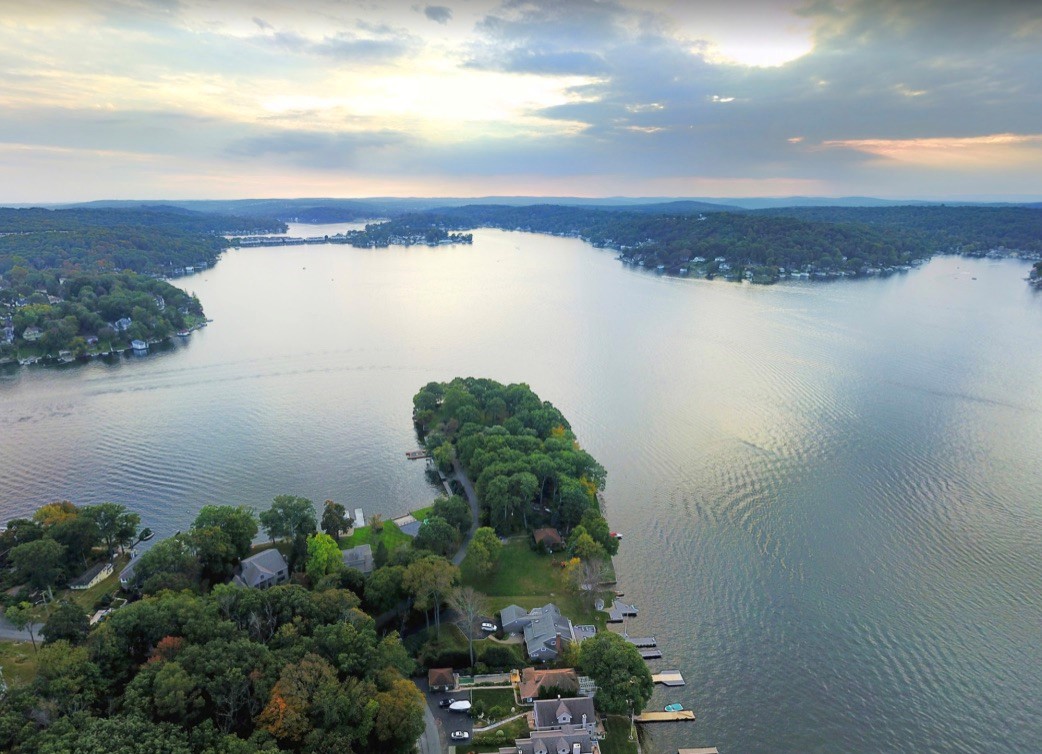
August 13, 2020| Environment
By: Lake Hopatcong Commission.Lake Hopatcong Foundation
The following is a joint press release issued by the Lake Hopatcong Foundation and the Lake Hopatcong Commission.
Lake Hopatcong Commission partners with the Lake Hopatcong Foundation with in-kind contribution from municipal governments, and the support of local and federal officials to address sources of non-point source pollution on New Jersey’s largest lake.
The N.J. Department of Environmental Protection this week announced that the Lake Hopatcong Commission would receive $206,000 in non-point source pollution grant funding from the state. These funds are dedicated by the State of New Jersey on a rotating basis to restore, prevent, and/or mitigate non-point source pollution.
“This grant allows the Commission to address four known sources of nutrient loading to the lake through watershed-based projects in each municipality while also studying the lake’s internal nutrient load,” said LHC Chairman, Ron Smith. "Understanding and addressing all of the lake’s nutrient sources will help us make informed, cost effective decisions to achieve our goal of reducing the likelihood of Harmful Algal Blooms (HABs) on Lake Hopatcong.”
The grant, which was submitted in partnership with the Lake Hopatcong Foundation with in-kind support from the four municipalities, will fund the design and implementation of four in-lake/watershed projects to reduce the availability of phosphorus that contributes to HABs. These measures include installation of floating wetland islands in Landing Channel in Roxbury, shoreline stabilization through plantings at Memorial Pond in Mount Arlington, replacement of select filter media in stormwater treatment devices in Jefferson, and replanting of a wetland stormwater basin in Hopatcong. All these projects will be critically evaluated through water quality monitoring. The grant will also fund a study to quantify how internal phosphorus loading, or phosphorus contained in the lake sediments, contributes nutrients that allow for prolonged HABs. Data derived from this study will be used to identify effective technologies to reduce nutrient availability and limit the impacts of HABs on Lake Hopatcong.
“The Lake Hopatcong Foundation is grateful at this news, and proud to contribute to this worthy set of projects that will support a healthier watershed for New Jersey’s largest lake,” said LHF President and Executive Director Jessica K. Murphy. “We are so appreciative of all the work that the Lake Hopatcong Commission and its partners are able to accomplish, and we are confident that this next round of funding will help ensure the lake is moving in the right direction.”
The grant application was prepared with the technical assistance of Princeton Hydro LLC and requested $206,000 from the state with a combined local in-kind match of more than $44,000 from all four municipalities around the lake (the Borough of Hopatcong, Jefferson Township, the Borough of Mt. Arlington, and Roxbury Township) as well as from the Lake Hopatcong Commission and Lake Hopatcong Foundation. This is the second grant awarded to the Lake Hopatcong Commission from state and federal sources for the mitigation, control, or prevention of HABs on Lake Hopatcong.
"Princeton Hydro is excited to be working with the Lake Hopatcong Commission, the Lake Hopatcong Foundation, the counties, municipalities and all of the watershed stakeholders in continuing long-term efforts to prevent mitigate and/or control Harmful Algal Blooms (HABs) in Lake Hopatcong through this Nonpoint Source 319-grant,” said Dr. Fred Lubnow, Director of Aquatic Programs at Princeton Hydro. “The projects in this grant will contribute toward addressing and reducing in-lake and watershed-based sources of pollution that fuel the development of HABs."
Non-point source (NPS) pollution comes from many diffuse sources, in contrast to point source pollution which results from a single source. NPS pollution is caused by rainfall or snowmelt moving over and through the ground. As the runoff moves, it picks up and carries away natural and human-made pollutants, finally depositing them into lakes, rivers, wetlands, coastal waters and ground waters. This pollution is one factor that contributes to the development of HABs.
Cyanobacteria, also known as blue-green algae, are naturally present in lakes and streams in low numbers that can form dense blooms under suitable environmental conditions, such as optimal sunlight, elevated nutrients from stormwater and other runoff, warm temperatures and calm water. These blooms can discolor water and produce floating mats or “scums’’ on the surface. Under the right conditions, these HABs also can produce cyanotoxins, which can be dangerous to the health of humans, pets and wildlife. Although Lake Hopatcong never reached the threshold for the cyanotoxins in 2019, some or all of the state’s monitoring stations on the lake showed cyanobacteria numbers above the threshold for a swimming and water contact advisory during the summer, which resulted in a devastating season for local residents and businesses.